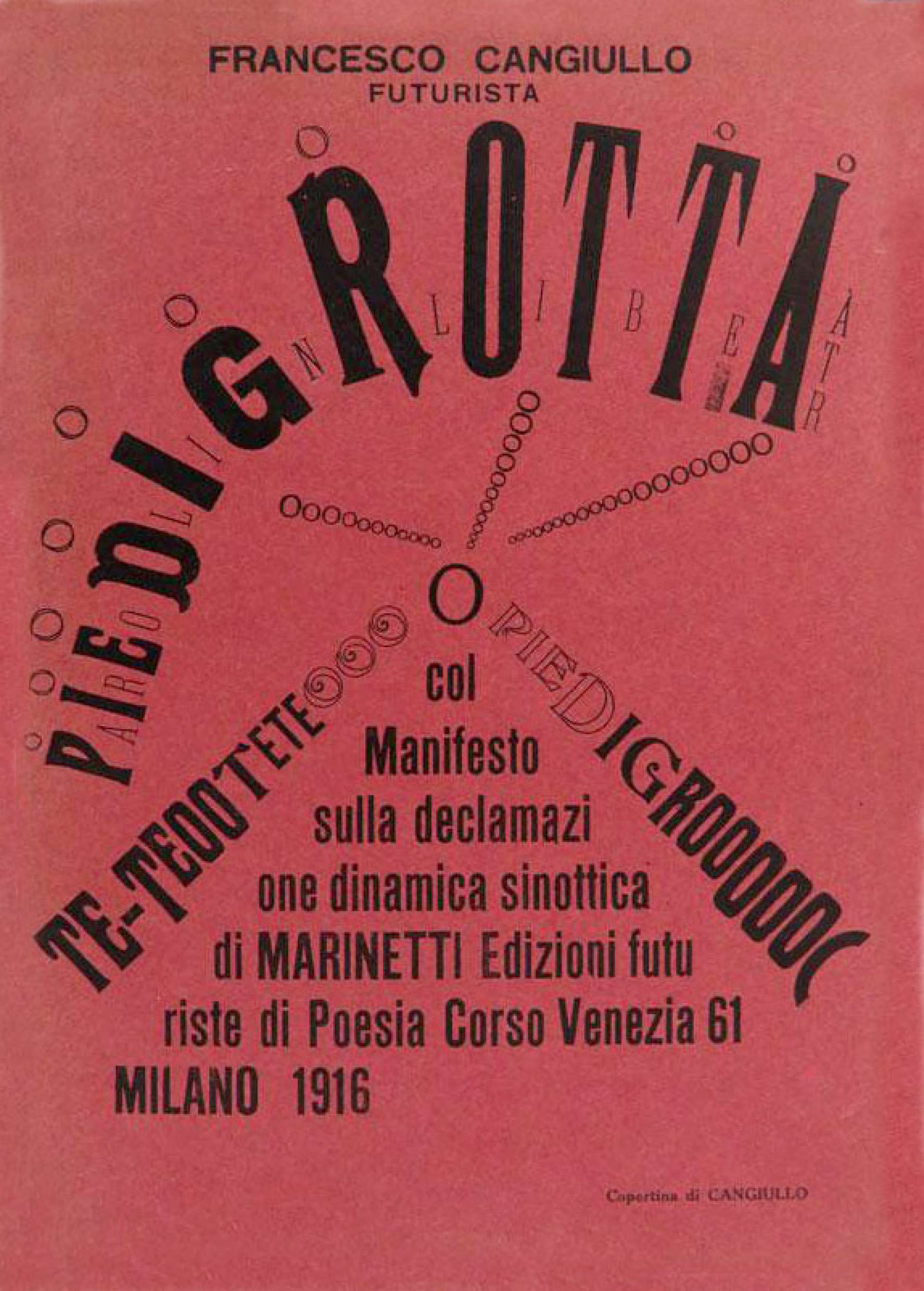
MARINETTI AND NAPLES, A “FUTURIST” STORY
ENCHANTED BY NAPLES, WITH ITS INCONTENIBLE DYNAMISM, WITH ANTI-CONFORMITY AND REBEL, PROVOCATIVE AND DESCACRATING SOUL
Dazzled by the electricity that filled the city night and day, Tommaso Marinetti chose it for the initiation of the futurist movement. The first Futurist Manifesto was published for the first time in Naples, on February 14th, 1909 by the publisher Bideri, and only a week later it appeared on the pages of Figaro. Since that date, Marinetti together with his staff - Boccioni, Balla, Carrà - is increasingly in the city to give conferences, hold incandescent meetings, declaim poems.
Naples. What a better scenario for an avant-garde movement that demolished the world with a full-fledged irony.
It was not so difficult to try to realize that in Neapolitans the wit and the irreverent spirit were consubstantial and that their theater of variety and even the ancient popular traditions were declinable in a futuristic style. The Piedigrotta festival with its phantasmagoric special effects, pyrotechnic shows, aerostatic ascents, excited Marinetti's imagination. In all that multimedia and technology, the poet saw a hymn to absolute modernity, an arrow towards the future.
The first Neapolitan Futurist evening was held at the Mercadante theater on April 20th, 1910. In the previous days, the maximum leader of the movement worked hard to promote the show. The city has reacted well, the theater is full. The public is heterogeneous: bourgeois, politicians, intellectuals, artists, some noblemen and the greatest exponents of the Neapolitan culture. Many celebrities: Benedetto Croce, Scarpetta, Vincenzo Gemito, Scarfoglio, Matilde Serao.
When the curtain opens, Palazzeschi, Carrà, Russolo, Altomare, Mazza, Aroldo Bozzagni, Giuseppe Carrieri weared their dinner suit. Marinetti instead wears a very elegant Stiffelius, while Boccioni flaunts an artist's shirt. «Buffoons, advertisers, madmen», so the Neapolitan public welcomes them, completely invaded. It is an audience accustomed to extravagances, to “strange” types and it is certainly not intimidated by that band of feverish artists, praising danger, aggressive movement, dynamic force. Many went to the evening already armed with belligerent intentions, ready to “make ammuina” (Neapolitan dialect means chaos) against the killers of the moonlight.
Among these Matilde Serao. Just during the dinner an orange is launched from the lady's stage against Marinetti. The latter, impassive, catches the fruit, peels and eats it, thus conquering some points in the heart of the public. The happening reaches its zenith when the person who embodied the idea of a crazy artist for the Neapolitans, the sculptor Vincenzo Gemito, comes off the stage and goes to embrace Tommaso Marinetti, while people go wild «Here are the two crazy men. They are crazy and crazy.»
The Mercadante evening ended at 11pm. But not the reaction of the Neapolitans, now in total Dionysian intoxication. Crowded outside the theater, a huge crowd welcomed the artists among screams of approval, applause, whistles and rattles. Making his way through the stick, a man approached Marinetti and said: «Long live photorism!» That man was the Camorrista Vastiano or 'chiummo, in Italian Sebastiano the bullet. It was at that point, probably, that Marinetti understood. Naples was much more futuristic than he was.
«We will sing the great crowds agitated by work, pleasure or riot: we will sing the multicolored and polyphonic tides of revolutions in modern capitals; we will sing the vibrant nocturnal fervor of the arsenals and construction sites, set on fire by violent electric moons; the greedy stations, devouring snakes that smoke».
The futurist cocktail called in Italian “Polibibita” is served!
The futurist movement was not only interested in art and poetry but in all aspects of life, we would say lifestyle today. And since the futurists were frequent visitors of bars and café chantant, they also wanted to have something to say on cocktails that, in perfect autarchic style, they called “polibibite”. In the recipe books of the period there are drinks created by many illustrious exponents of futurism. They were revolutionary drinks because the futurists certainly could not make cocktails, pardon polibibite, according to the strict rules in force in the sector. As matter of fact, Marinetti argued that “Every dosage error can create a different recipe every time”. In creating their cocktails, the futurists used styles and techniques that closely resemble the art of contemporary mixing.
During his stays at the Grand Hotel Parker's, Marinetti loved to spend many hours at the bar. As a tribute to the famous Italian artist, at our Liberty restaurant, which preserves intact the atmosphere of that time, we serve cocktails inspired by futurist polybibites, which are nowadays really à la mode among the most refined bartenders.